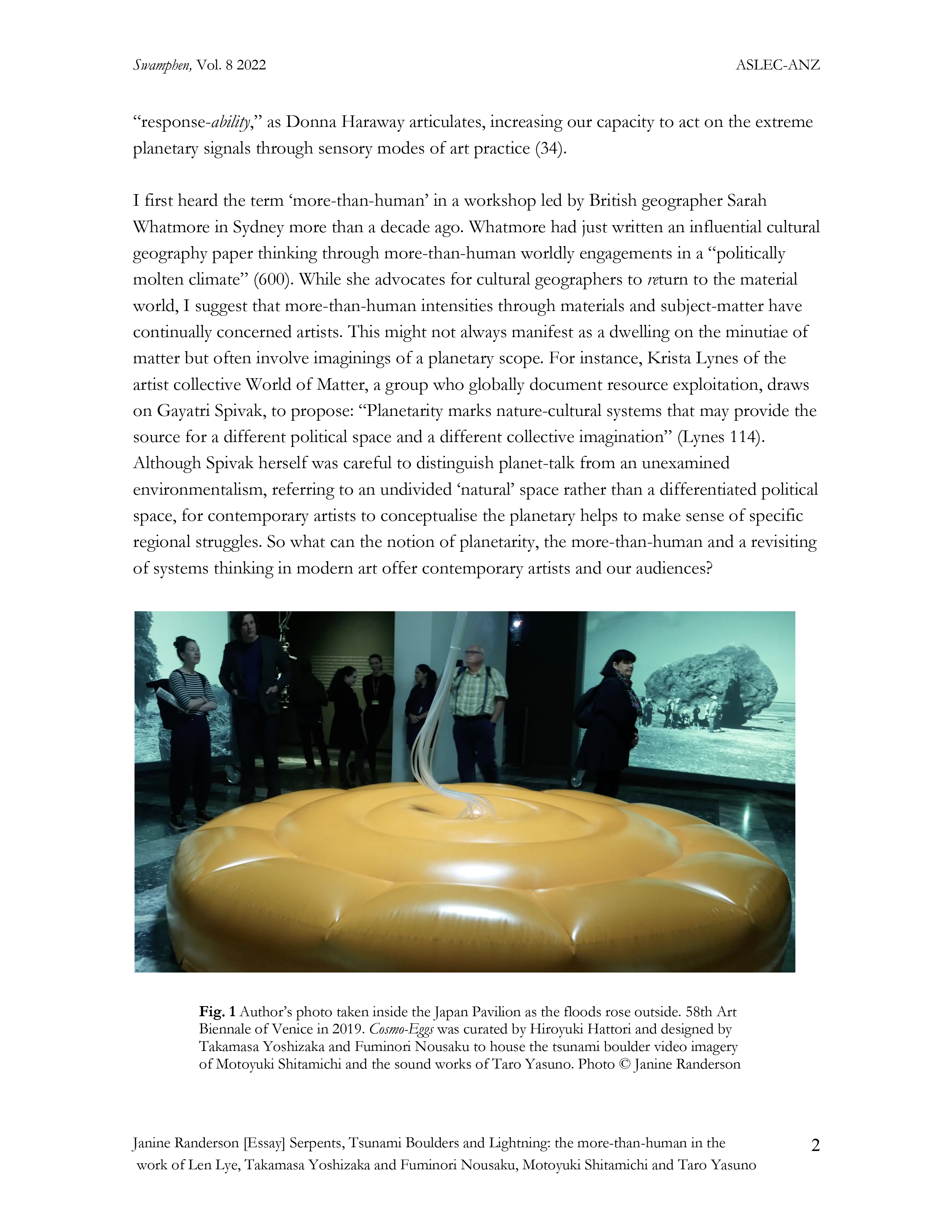Serpents, Tsunami Boulders and Lightning
The more-than-human in the work of Len Lye, Takamasa Yoshizaka and Fuminori Nousaku, Motoyuki Shitamichi and Taro Yasuno
DOI:
https://doi.org/10.60162/swamphen.8.16687Keywords:
more-than-human cosmologies, contemporary art, tsunami, experimental film, Len Lye, Venice Biennale, Te Moana-Nui-A-Kiwa, weather, planetary energies, Gayatri SpivakAbstract
More-than-human cosmologies, as expressed in contemporary art practice, present a plane for sensing and feeling the extent of the ecological strain on our planet. The relationship between geos, biota and Anthropos is untenable; we are divided by forced climate displacements for humans and the rapid mass extinction for a plethora of flora and fauna. From the intensifying tropical cyclones in Te Moana-Nui-A-Kiwa, the Pacific Ocean in 2019–2020, to the swathes of violently destructive wildfires in Australia and California sparked on occasion by dry lightning and fanned by strong winds, we no longer need scientific projections to hear and feel the shattering signs of climate change. Even the bastions of contemporary art can’t escape the convergence of weather gone awry as art objects and more-than-human waters meet. Venice, where I visited the Japanese Pavilion described in this paper, was later swamped by a deluge of lagoon water during the 58th Art Biennale in 2019. To radically shift our dealings with “others” is an urgent demand from the biota to weather systems, displaced humans and the more-than-human, at a planetary, as well as a situated scale.
Keywords: more-than-human cosmologies, contemporary art, tsunami, experimental film, Len Lye, Venice Biennale, Te Moana-Nui-A-Kiwa, weather, planetary energies, Gayatri Spivak

Downloads
Published
Issue
Section
License
Authors who publish with this journal agree to the following terms:- Authors retain copyright and grant the journal right of first publication with the work simultaneously licensed under a Creative Commons Attribution License that allows others to share the work with an acknowledgement of the work's authorship and initial publication in this journal.
- Authors are able to enter into separate, additional contractual arrangements for the non-exclusive distribution of the journal's published version of the work (e.g., post it to an institutional repository or publish it in a book), with an acknowledgement of its initial publication in this journal.
- Authors are permitted and encouraged to post their work online (e.g., in institutional repositories or on their website) prior to and during the submission process, as it can lead to productive exchanges, as well as earlier and greater citation of published work (See The Effect of Open Access).
